Dogs are notorious for getting their snouts into things they shouldn’t. Besides their dog food, they’ll happily snuffle and scarf up anything they come across. This includes litter on the sidewalk to newly planted flower bulbs in your garden. And while some of the stuff your pooch comes across is gross, others can be downright dangerous. In fact, there are tons of poisonous plants for dogs that can harm your pet.
Keep Dogs Away From These Toxic Plants
1. Sago Palm
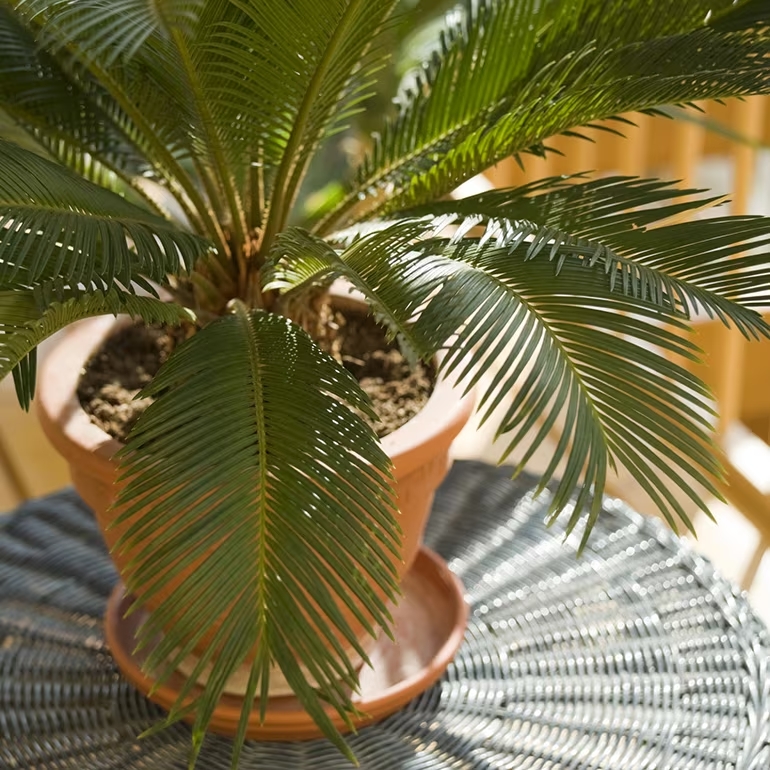
With its stiff fronds, the sago palm looks like a tiny palm tree and can live indoors or outdoors. It’s toxic to all pets, says Laura Stern, DVM, DABVT, director of client programs for the ASPCA Animal Poison Control Center.
Symptoms include:
- vomiting
- diarrhea
- seizures
- liver failure
- potentially death
And while the leaves and bark will harm your pup, “the seeds or ‘nuts’ contain the largest amount of toxins,” Dr. Stern says.
2. Tulips
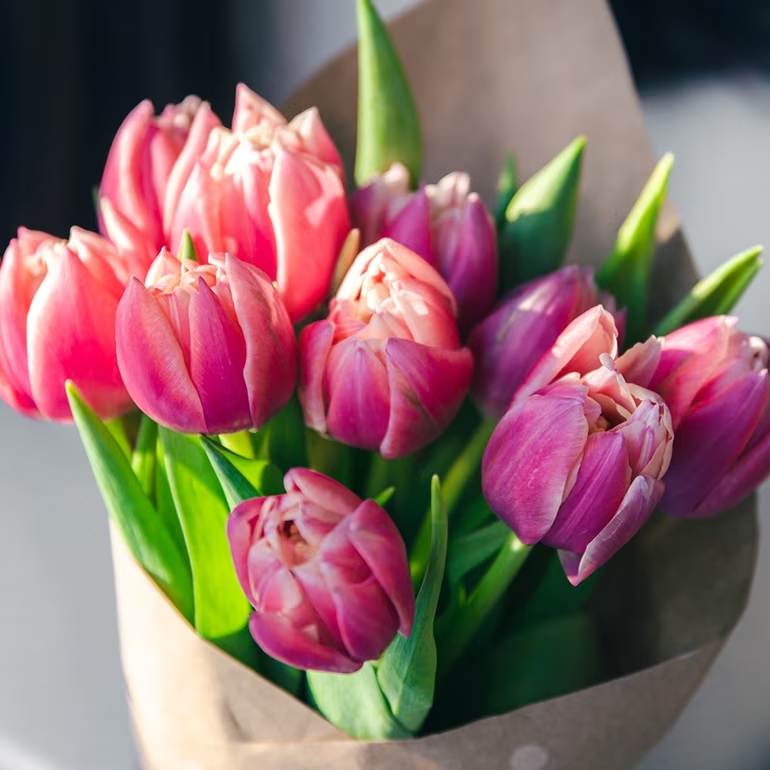
People love to have tulips in their homes, both indoors and outdoors, as they bloom in spring. However, dog parents should avoid these brightly colored flowers.
It is possible for your dog to get upset stomach if he chews on the lance-shaped leaves. Dogs are most at risk when they dig up and eat the newly planted bulbs, which contain the most toxins.
According to Dr. Stern, tulip bulbs can cause:
- Stomach upset
- Depression
- Loss of appetite
3. Lily of the Valley
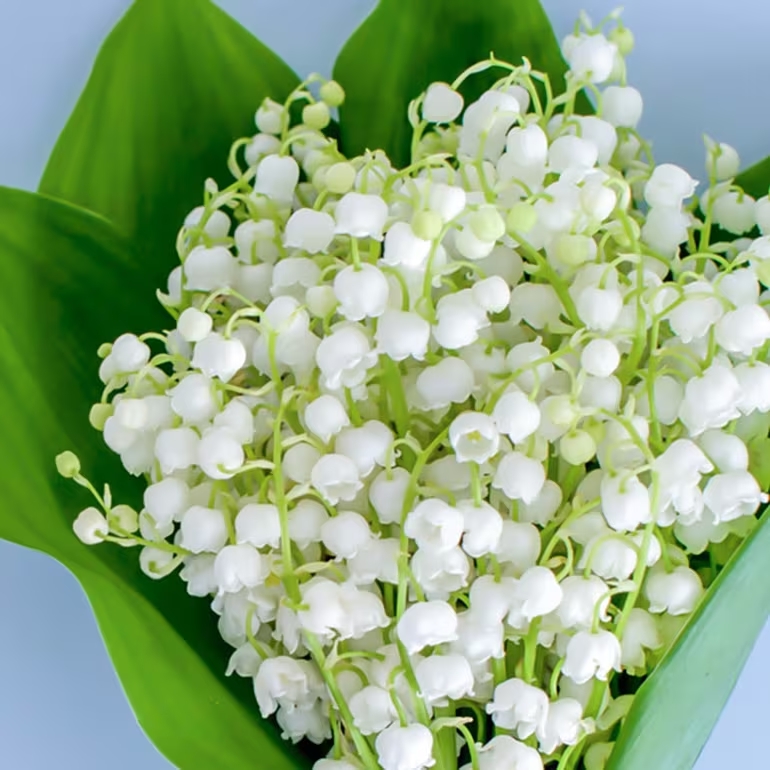
Lilies of the valley are a popular garden plant for a number of reasons: they are sweet-smelling, they have cute white bell-shaped flowers, and they thrive in shady areas. But one thing the flowering plant’s beauty masks is how poisonous it is to dogs.
“Even a small exposure to any part of the plant can affect a dog’s heart rhythm and rate,” Dr. Stern cautions.
Ingestion of leaves or bulbs can also cause the following symptoms:
- diarrhea
- vomiting
- low blood pressure
- disorientation
- seizures
- coma
- arrhythmia (irregular heartbeat)
And while the leaves and bark will harm your pup, “the seeds or ‘nuts’ contain the largest amount of toxins,” Dr. Stern says.
4. Oleander
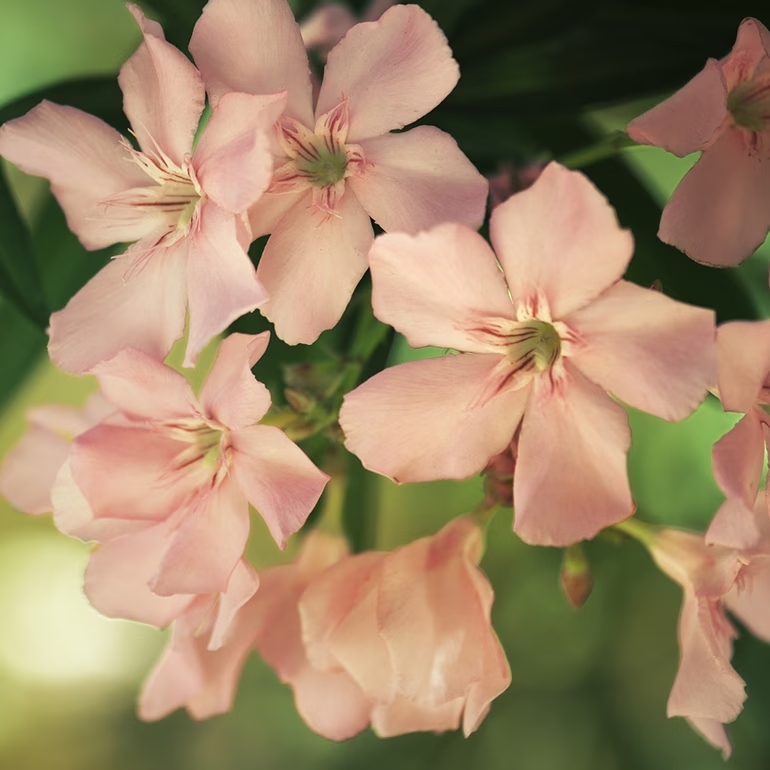
On the West Coast, oleander is a common landscaping plant. This bushy shrub can grow as high as 12 feet, and it’s prized for its clusters of flowers in shades of yellow, white, pink and red.
Every inch of this plant is poisonous to dogs—from the flower petals to the pointy, long leaves.
Oleander contains cardiac glycosides as well, Dr. Stern explains, adding that symptoms include:
- changes in heart rate and heart rhythm
- diarrhea
- abdominal pain
- drooling and excess salivation
- possible death
5. Philodendrons
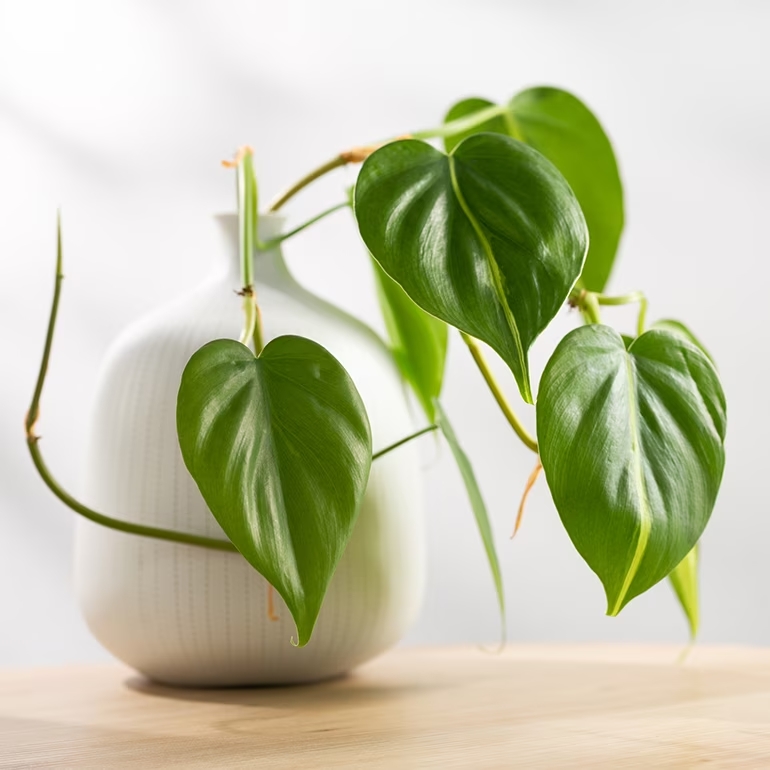
Philodendrons have heart-shaped leaves and long vines, and are popular houseplants. Beware, though: These plants contain insoluble calcium oxalate crystals, which can irritate your dog’s mouth and lips.
If he’s swallowed some leaves, other symptoms include:
- pawing the mouth
- drooling
- retching
6. Rhododendron (Azaleas)
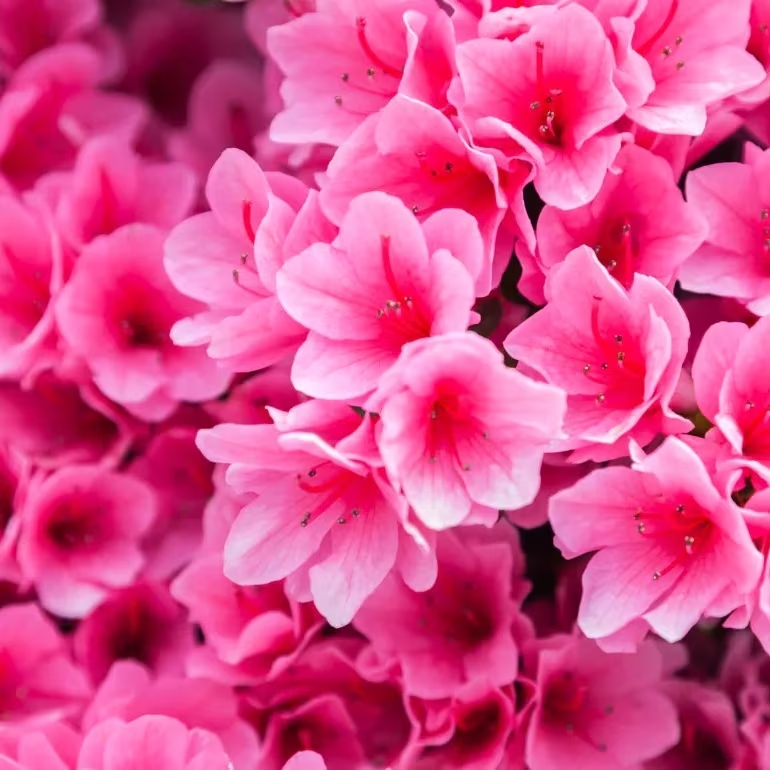
This flowering shrub can be found in many front and back yards across the country.
All parts of these flowering beauties contain grayantoxin, and the reaction your pup gets depends on how much they’ve eaten.
“The most common sign with the ingestion of azaleas is stomach upset,” Dr. Stern says.
Azaleas are rarely eaten by dogs, but when they do, they can get:
- very weak
- tremors
- low blood pressure
- irregular heart rate and rhythm
And while the leaves and bark will harm your pup, “the seeds or ‘nuts’ contain the largest amount of toxins,” Dr. Stern says.
7. Dieffenbachia (Dumb cane)
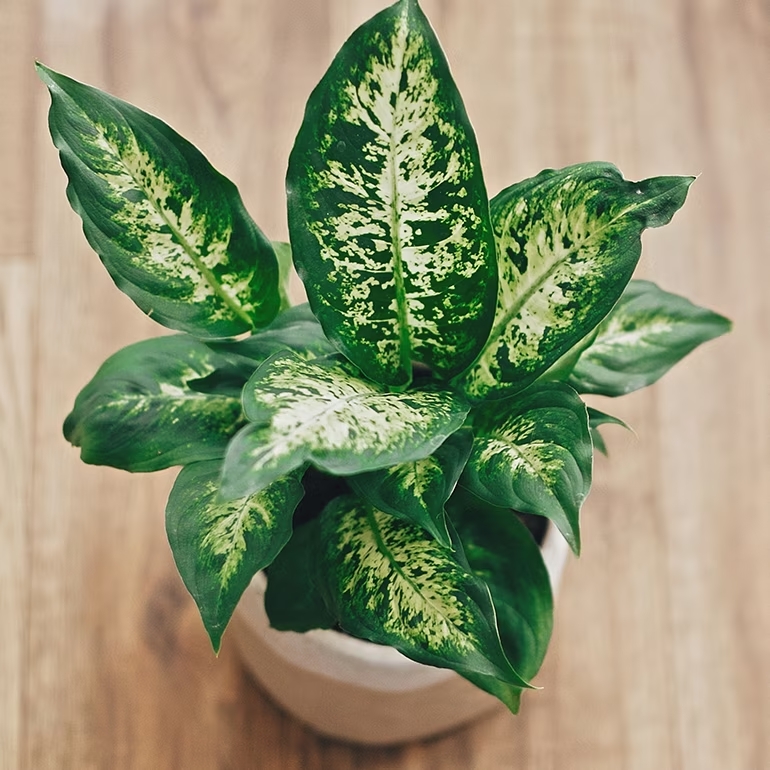
Mostly indoor plants, they have lush green leaves with white spots or stripes, and if your dog nibbles on them, they may experience mouth, tongue, and lip burning, thanks to calcium oxalate crystals (like those found in philodendrons
According to Ann Hohenhaus, DVM, DACVIM, a veterinarian at Animal Medical Center in New York City, other symptoms include:
- drooling
- vomit
- hard time breathing
And while the leaves and bark will harm your pup, “the seeds or ‘nuts’ contain the largest amount of toxins,” Dr. Stern says.
8. Japanese Yews (Buddhist pine, Southern yew)
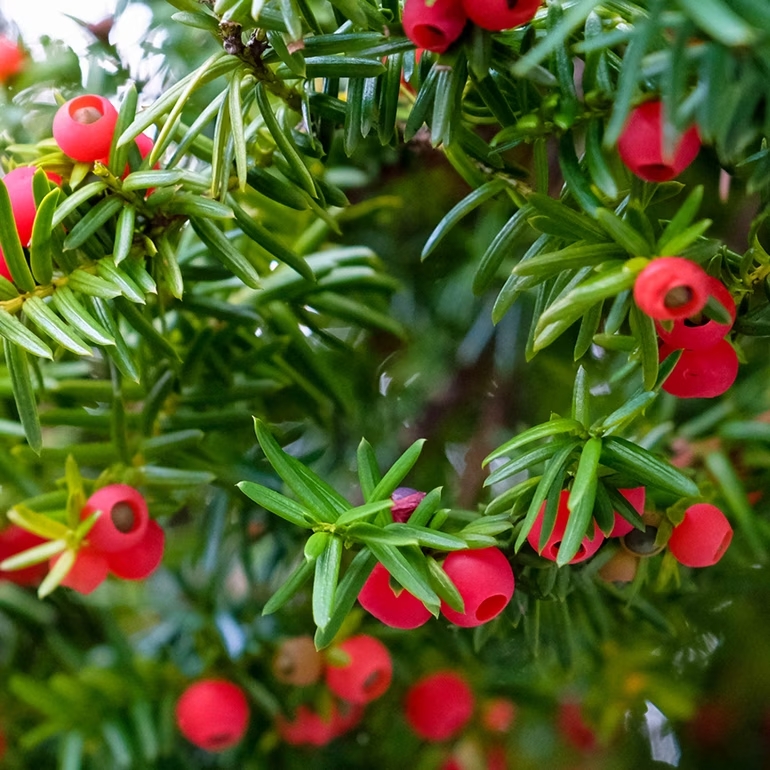
These plants make excellent hedges, since they are like small evergreen trees or shrubs with needle-like leaves and small red berries. You can find them throughout the United States.
While the berries aren’t toxic to dogs, the leaves, seeds and bark are.
According to Dr. Stern, they can cause:
- vomiting
- lethargy
- wobbly gait
- heart and blood pressure changes, “which can be life threatening
Other early warning signs your dog may display include seizures and muscle tremors.
9. Cyclamen

With intensely colored blooms (think every shade of pink) that last a long time, cyclamen is a popular houseplant, especially in the winter.
If your pup eats any part of the plant, they’re likely to:
- drool
- vomit
- have diarrhea
If they dig up the plant and gobble up the roots (or tubers as they’re known), it can affect their heart rate and rhythms, and may even cause death, Dr. Hohenaus says.
10. Autumn Crocus
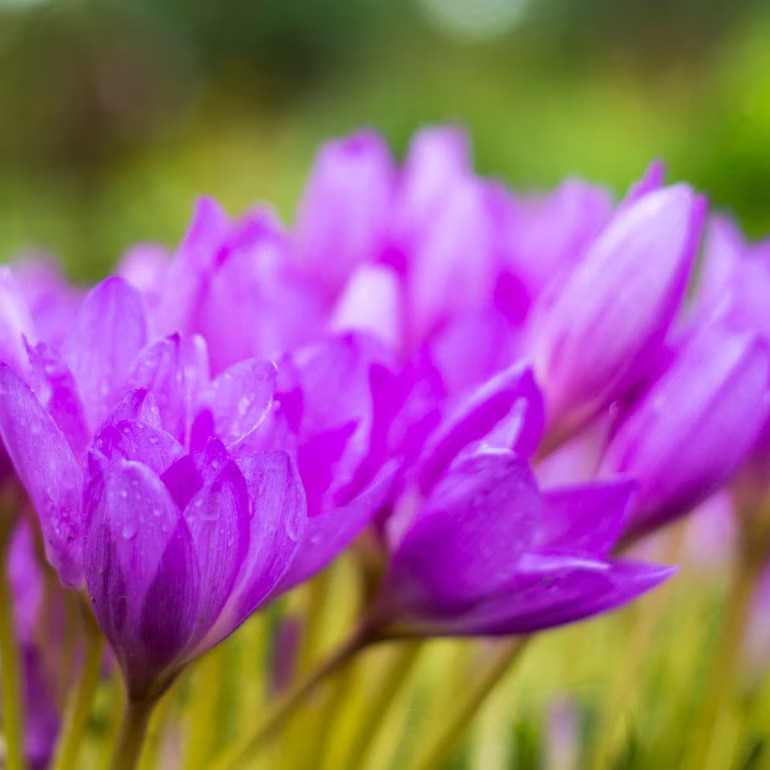
When these plants bloom in the fall, their delicate flowers rise out of the ground without leaves—one reason why they’re also known as naked ladies. The leaves and bulbs appear in the spring, long after the flowers have died.
If your dog eats even a small bit of the flowers, leaves or bulbs, they may exhibit the following behaviors:
- vomiting
- diarrhea
The toxins in the Autumn Crocus, known as colchicine, can have long-lasting effects too, such as suppressing bone marrow and causing liver failure, Dr. Stern says.

